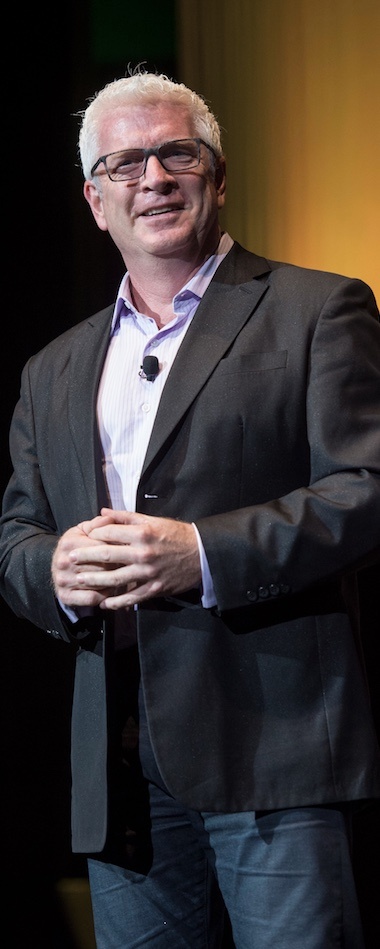Transcript Reprint from an Interview with Dr. Diane Hamilton:
Aligning The Conscious And Subconscious with Vince Poscente
I am with Vince Poscente who is rated by Meeting Professionals as the Top Ten Motivational Speaker. He is a New York Times bestselling author who wrote the international phenomenon The Ant and the Elephant: Leadership For the Self. He’s an Olympian, could be a comedian and he has a lot of energy and personality. It’s nice to have you here, Vince.
Thank you. I appreciate it. It’s good to be with you.
You’re obviously an entertaining speaker. I want to know how you got to this level of success. Can you give a little background?
You mentioned that I was an Olympian. A bit of that story is I didn’t start ski racing until I was 26 years old and ended up being in the gold medal round at the Olympic Games a few years later. A few years after my 26th birthday to be in the Olympic Games involved a specific strategy. While I was racing, I thought, “I was ranked tenth in the world after a couple of years. I’ve put together a specific mental training program to work well. I could win this thing,” and then I didn’t. Here I was placed fifteenth in the Olympic Games. I lost. There was no demand for my speaking business but many months after the Olympics, their speaker canceled. On the last minute, they said, “Would you come and speak to our group of 90 networking people?” Four people independently came up after and said, “You’ve got to do this for a living.”
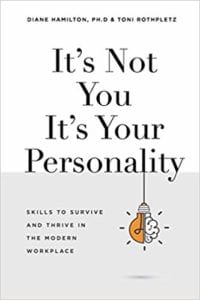
If somebody said, “You got to see this movie,” you’d go, “Yes,” but if four people independently say, “You’ve got to see this movie,” you would go, “What is it about? What do I have to see?” I paid attention and then grew my business. It was very much a standing start. There was no momentum at the beginning because I was in the Olympics. There are a lot of gold medalists getting their phone ringing off the hook saying, “Would you speak to us?” but to be in demand to have that referral network where people say, “Would you speak to our group?” that came from improving as a speaker. Much the same way I did it as an athlete.
You did it because you’re only one of four people on the planet to be inducted into the USA and Canadian Speaker Hall of Fame. That’s saying something. You’re a New York Times bestselling author of seven books too. You’re a busy guy. What was the most difficult book for you to write off all of those?
Always the most recent one, they’re horrible. I’ve never given birth obviously. The gestation period in a book gets more and more difficult each time. I’m working on one right now. I won’t tell you the title but it’s a sequel to The Ant and the Elephantwhich is a parable about the conscious and subconscious mind. I’m working on that right now. They’re all like your kids. You get out there and you can’t pick a favorite.
I found what you were talking about the ant walking one direction and then the elephant walking the other. Can you share that a little bit because I liked the subconscious versus conscious discussion you had with that?
I went to a presentation by a guy named Dr. Lee Pulos. You know when you’re sitting there and then light bulbs go off? This guy said, “In a second of time, your conscious mind is processing with 2,000 neurons.” Right now, you’re listening to what I have to say. You lead by saying, “I’m very funny and I haven’t been funny,” and all sorts of things you’re thinking of consciously with 2,000 neurons every second. In the same second, the subconscious mind is processing with four billion neurons. The ratio between the conscious and subconscious mind when Pulo said is if you took a golf ball and put it on top of the Houston Astrodome. That would be the ratio of the conscious and subconscious mind. Mathematically, I took that down to what if you put an ant on the back of an elephant? There’s a more alliteration with that, it’s a stickier concept. I put that in my first book, that concept, about how we can have a conscious intention. You can consciously say, “I want to go on a diet,” but the subconscious mind might say, “No way, pal. Not without beer or pizza, I’m not.” It might have all these reasons why not that are unconscious.
Consciously, in the parable in the book, the ant says, “I want to go west,” but it’s on the back of the elephant. It doesn’t see the elephant. If you’re an ant on the back of the elephant, you’re not seeing an elephant. You see just a gray landscape. It’s the same deal with our subconscious mind. We can’t possibly comprehend the power, the immense direction and agenda of the subconscious mind. In the same breath, what if we had alignment between your conscious intention and your subconscious agenda? The book, The Ant and the Elephant, is about creating the alignment of where you want to go with your life first. Where is it that you want to go? Identify that with what I call the elephant buzz, that thought that creates a physical reaction and then being able to get your subconscious mind to step in line. There is a technique and that’s how I got to the Olympics in speed skiing. I end up skiing 135 miles an hour not because I wanted to, but I wanted to go to the Olympic Games. That emotional buzz, the elephant buzz of marching in the opening ceremonies. First you identify it, which I did and then I went, “How are we going to get there?” Aligning your ant and elephant is critical and then it gets easier. What if life got easier?
You said, “Where you want to go?” but a lot of where we want to go is impacted by our environment of what people have told us we should do or what we thought was boring, maybe we wouldn’t find boring. It’s impacted by our teachers when we’re in school or friends. How do you get over that to open up your mind to be more curious and successful?
Without experience, we don’t have the confidence.CLICK TO TWEETI split it into five C’s and let me go through this real quick because that will answer your question in the broadest sense. When you clarify where you want to go with that emotional buzz, you’re then going towards the second C which is commitment. Stepping towards something, you can be held back by all sorts of things that you are scared of, childhood wounds, limiting beliefs or all those subconscious things that exist. The commitment is less about a moment. Every Saturday, couples walk down the aisle and commit. That’s a moment in time. Commitment is a process. You have to step in and consistently step forward. Another way to put it, I call it the Mathematics of Opportunity. You go into a hallway where you are in your life and you see a door. Open the door and then look for another door. Open that door. Stay curious and that feeds into the process of commitment. The third C is consistency and then you’re in this process of consistency where you’re consistently executing. While I was racing, the philosophy was to do what the competition is not willing to do.
If you want to know what your competition is not willing to do, it’s typically those are the things you’re not willing to do either. To look in the self-honesty mirror and say, “What are the things that the top, the highest performers are not willing to do?” I say the highest performers because this is back to the Olympic story. In order to qualify for the Olympic team, you have to be ranked top sixteen in the world or higher, at least where I’m from in Canada or the United States for that matter. What are those top sixteen guys in the world not willing to do? It changes the dynamic of what you do consistently from the heroes in business, the heroes in sport. The heroes in leadership are the ones that are working harder and the first one in the office and the last one at night. These are the people that we look up to that are working hard. Work smarter. The Olympic motto is, “Citius, Altius, Fortius,” which is, “Swifter, Higher, Stronger.” How about adding a fourth one which is Smartius? Why not be smarter in how you approach this? That’s under the banner of consistency. Consistently executing, consistently innovating, consistently doing things the competition is not willing to do.
The fourth C is confidence. You can draw a direct line from confidence to outcomes. If somebody has high confidence, they’ll have peak performance or their performance will be higher and then you’re going to have better outcomes. What we consistently do is we always focus on, “I don’t have the results that I need. I need to change my performance. I need to do things differently.” That’s the case, but go further back and go, “What is my level of confidence?” If confidence is high and fear is low, you’re going to naturally have a better performance. Better on a sale or negotiation or speech you’re giving. For the leaders reading and the people you’re talking to and trying to get them going the same direction. If you have high confidence, you have better outcomes. That’s the fourth C.
The fifth C is control. Control is an odd word. Give me the long list of things you can control in your life. It doesn’t exist. You can control what you bring to the environment, meaning you can control what you bring to a meeting. You can control what you bring to a conversation with a teenager. You can control routines. The routines that I had when I was an athlete, I do the same thing prior to every keynote speech, that motivational talk I give, the exact same things. You get there early. I visualize the outcomes. I use something called the Vortex Technique where I get the highest and best energy and then I make the decision to have fun. I was preparing for our interview and I was going, “I want to talk about this,” and I was focusing on this. I went through these notes and then I went, “Wait, have fun.” Have you ever had a speaker you get the impression they’re saying, “Take my advice, I’m not using it.”
You brought up a couple of things that are important to my research. I was talking about how we have environment or assumptions. You also brought up fear. I came up with four factors that affect curiosity and fear, assumptions, technology and environment are the four that I found. Fear is such a huge thing. You talk about fear of opening the door or whatever. How do we get that high level of confidence? How do you overcome that fear?

That’s huge and it’s only getting bigger. The reason we have so much dysfunction in our world now is a confluence of speed, the volume of things coming at us and at the same thing with that volume is being able to say, “What could happen? The fear attached to that.” Confidence is very much attached to experience, but we don’t have the experience with the new marketplace or a new landscape that we find ourselves in. Political, interpersonal, everything’s changed. Without that experience, how do you have confidence? If you don’t have confidence, you don’t have peak performance and you have the outcomes that you’re unhappy with. Here we are in an insidious direct line to outcomes that aren’t optimal. Go back to the clarity and find out where is it you want to hit? What is true north for you? We don’t know how we’re going to get there. If you’re clear on that emotional buzz of that outcome you’d like to have, is it the family together in a family reunion? Is it a situation in the marching of the opening ceremonies? Maybe I set a goal of having a New York Times bestselling book, I said, “How cool would that be? I don’t know how to get there.” To be able to create confidence, one tool that I wrote in the book, The Ant and the Elephant, is the ant has a conversation with the elephant.
Your conscious mind has a conversation with your subconscious mind only when it triggers with a negative thought. A negative thought is anything that takes you off course from the clarity, that outcome you’re headed towards. Let’s say a leader wants to be able to have a launch of a new product that is going to be in the media and everybody’s going to be talking about it. Everybody’s going to be excited and it’s going to be the new new thing. Let’s say a thought comes up and says, “We don’t have the budget for that.” The conscious mind says to the subconscious mind, “Thank you, but that’s not part of my vision. My vision is,” and then you go back to the exact scenario that you painted in the first place. How cool would it be? The launch, the media attention, the new new thing. You’ve interrupted the negative thought, the fear and then pivoted onto the emotional buzz. Every time you pivot onto an emotional buzz means that you have aligned 2,000 neurons and four billion neurons at the exact same time. The physical reaction from a thought is a litmus test for your ant and elephant headed in the same direction. The more you keep those four billion neurons aligned with your conscious intention, the easier things will be and the more things will manifest and appear. They show up. Somebody gives you a phone call and makes it happen. It works out that way.
How do you use that to become a New York Times bestselling author? How do you get there?
It’s very much a process. When I set out to be a New York Times bestselling author, it would have been my fourth book I was working on. I laid it out on the table and said, “This is the goal. This is the objective,” and I’ve brought people in who are way smarter than me which isn’t that tough. I have skied at 135 miles an hour. Let’s put that in perspective. I got the marketing team and they said, “You raced in the Olympics at 135 so speed is your thing.” We started with the speed concept and said, “If the speed’s the thing, what’s society dealing with right now? Society is in overwhelm. Why don’t I write a book called The Age of Speed?”
I brought in my publisher then I brought in a publicist who’d worked with John Maxwell and Marcus Buckingham and big authors like that. I worked over with a publisher who probably in the last few years had about fifteen New York Times bestselling books. I assembled this dream team and not because I knew that I should upfront. I said, “If we got the concept, we got The Age of Speed, we got the publicist, what’s next?” I know a guy and it’s like, “Boom.” Things in motion tend to stay in motion. Why don’t you be the architect for the direction of that motion? Most people aren’t.
Clearly define what the big puzzle piece looks like, smells like and tastes like. When I talk about a direction you’re headed, when I say clarity of vision, I wish I never said that in the book. It’s more than a vision. You’ve got to smell it and taste it. You got to bring in the five senses and then the emotion attached to that. That’s something I’ve come up within the last few years. I call experiencialization. Experience it. Experience the entire physiological. The smell, the taste, the touch and then the emotion attached to that. That makes it clear to the subconscious mind, the elephant, where it is you want to go. If you’ve got four billion neurons working in the same direction as your 2,000 neurons every second, who are you to say, “How do I do that New York Times bestselling book?” Get out of the way. Be in that state and that direction. Thank you, that’s not part of my vision. Pivot and then you go back onto what that outcome is. It’s less about what you do and more about the state you’re in and then people follow you. People follow people who have a passion for where they’re headed. Look at the political races. Look at the debates that are happening. The people who are most passionate about where they’re headed are the ones who are most appealing.
That’s an interesting aspect of what you were talking about. You have a lot of passion for what you do. Your prior background was a VP of Marketing International Investment Properties. You had this award-winning sales career. I’ve been in sales for many years and different aspects. How much is that foundational to your success to have a sales background do you think?
The more you keep those four billion neurons aligned with your conscious intention, the easier things will be.CLICK TO TWEETI’ve got three kids. They’re now 21, twenty and eighteen. From day one, my wife’s an entrepreneur. I’m an entrepreneur. We knew that they will succeed based on how well they communicate. There’s a saying, “If your lips are moving, chances are you’re selling something.” Connect the dots and say, “How well can you communicate? How confident can you be?” All three are extraordinary. The oldest is at Berklee College of Music. He’s dropping an album. We don’t finance any of what they do, by the way. It would be easy for us to write a check and say, “We got your back,” but my son, example, wanted to release an album. He has to hustle. He went to these top studios. One in Seattle, one in Dallas and one in Boston. Each of these places he was going to school at and he said to the studio owners, “I got this job at this hotel where I’ve got the midnight shift. At the end of this week, I’m going to make $400. If I give you $390 and I keep $10 for food, would you?” These studio owners knowing in the back of their mind they charge about $10,000 a day. They’ve got a 21-year-old so passionate and so specific on what he wants to create and then he’s making it happen. You do have to lead by example. We each knew. Do what you want. I know in my life that I have to lead by example. If I lead in a way that has people go, “That’s the way we’re going to make it happen.” Our middle child, she’s at Wharton School of Business. She went to an arts magnet school. She wasn’t your prototypical Wharton-type kid, but she gets after it. The reason she beat out 39,000 other kids is that she was deliberate on where she wanted to end up and had an emotional buzz attached to that. The youngest is a dancer.
That’s amazing that your kids do such interesting things. You do a lot of interesting things. I was in a rock-climbing competition and I found that you’re the Founder of the Heroes Climb Initiative, climbing and naming mountains after everyday heroes. You’ve participated in six Himalayan expeditions. You’re super athletic in all aspects.
Yes and no, but I’m more curious. If you looked at me, “You look like a chunky version of Anderson Cooper. You don’t exactly look like an athlete,” but I play beer league hockey. You’ve brought up all these things and I sound like an overachiever. I’m more curious. Everybody thinks about what I do. I don’t do it for the accolades. I put it on the bio so people can feel good about hiring me as a speaker. Make it about your audience. What are you going to do to create that emotional buzz? What are you going to do to commit and step up? What are you going to do consistently? How can we break it down and make it happen? Your podcast, your radio show, you have such an opportunity to reach out to people and truly transform people by the people you interview. That’s extraordinary, the privilege you and I have to get out there.
That’s probably a lot of my goal with this. You talk about emotional buzz. My dissertation was in emotional intelligence. I’m fascinated by how much emotions and all the things that we learned just being in sales like you were. We have a lot of similar background things. I’ve never been to the Olympics to that extent, but the sales background and some of the stuff that we have in common. We learned a lot about the lack of some of the emotional intelligence that was out there, at least I did. I was a pharmaceutical rep and saw a lot of doctors. It’s interesting to see all this training. Are you seeing people improving? What has been your experience? You’ve had some of the hugest clients. Your list is a who’s who of who you’d want to have to consult and speak to in the world. Are you seeing that we’re getting better at our emotional intelligence, our interpersonal skills and all the things that fall into the soft skills area? What are you seeing?
I see us getting worse on one level and it’s affecting everything. It’s this absolute determination to be right. The people are jumping up and down and sticking their feet in the ground and saying, “This is the way it has to be.” That is a lack of emotional intelligence. That is a lack of empathy. It’s creating a conversation. In one breadth I see things getting better. I don’t know if it’s just the kids I’m seeing around me. I speak to some youth groups at times. I am so optimistic about the future. I see so many aware people out there that the default to say, “What’s wrong with Millennials or what’s wrong with Generation Z?” This optimum comes from the awareness that people are going, “What if I’m not right? What if you have a point of view?” We had this little aside. When we’re doing this interview, the midterm elections in the US are coming up here in the next few weeks. We decided to watch one of the big debates between Ted Cruz and Beto O’Rourke.
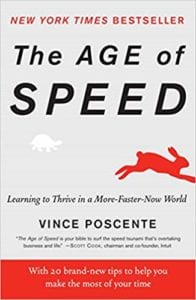
We had a drinking game attached to it. What we did was every time Cruz said, “Hillary Clinton,” we’d have to drink a beer. Every time Beto does say, “I’ve been to 254 counties in Texas,” you’d have to slug a beer. The reason I bring that up is we created an environment to have a conversation. We paused the TV and then we talked about something. We had Republicans and Democrats in the room and people and kids. Not from Canada, but what am I. I’m not either. I just moved here. I don’t have a predisposed political party that I have to be a part of. To create that dialogue, to put yourself in an environment where people are talking and being aware. Three of the people in the room were under 25. Part of their discussion was enlightening. To shift from being right to shift to having a conversation, just communicate is critical.
Creating a dialogue is important and that’s what I’m trying to do with my work. A lot of what you do is important. Your books have been unbelievable. I’m looking forward to the next one. I’m wondering if it’s going to entail that word that you created.
Experiencialization.
It was wonderful having you on the show. A lot of people are going to want to know how they can get your books or find out more to have you speak and all that. Vince, could you share that?
My website VincePoscente.com will get you there. You can go to AntAndElephant.com and you’ll be able to find me that way too.
One way or another, hopefully, they’ll find your work. It was nice having you on, Vince. Thank you so much for doing the show.
If your lips are moving, chances are you're selling something.CLICK TO TWEETYou’re a true pro. Keep it up.






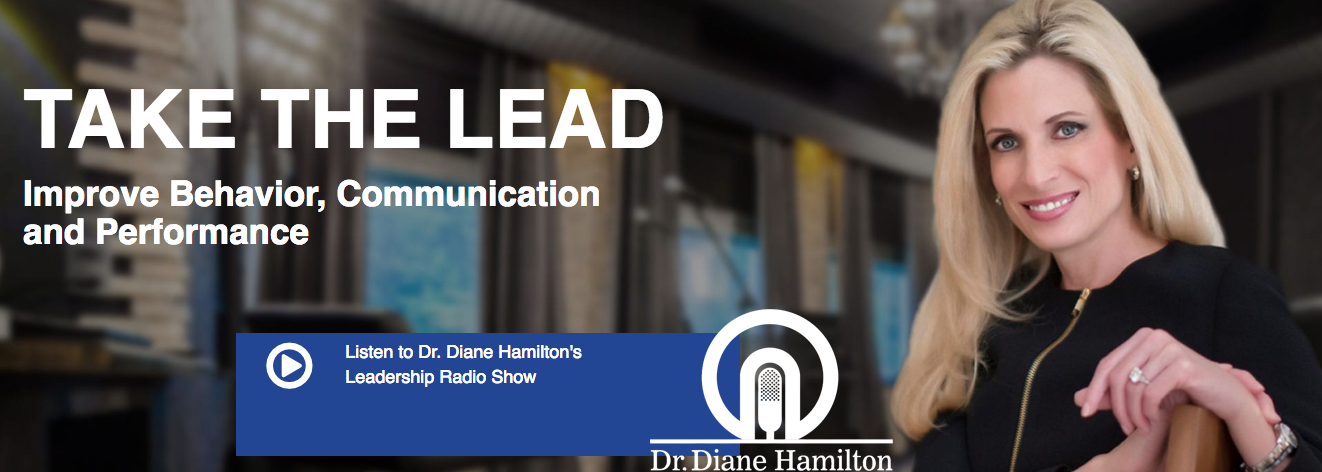
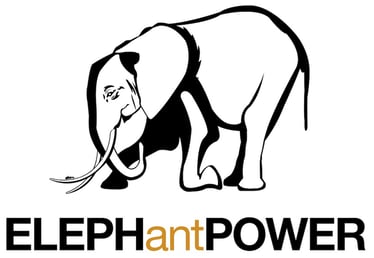


 ''
''